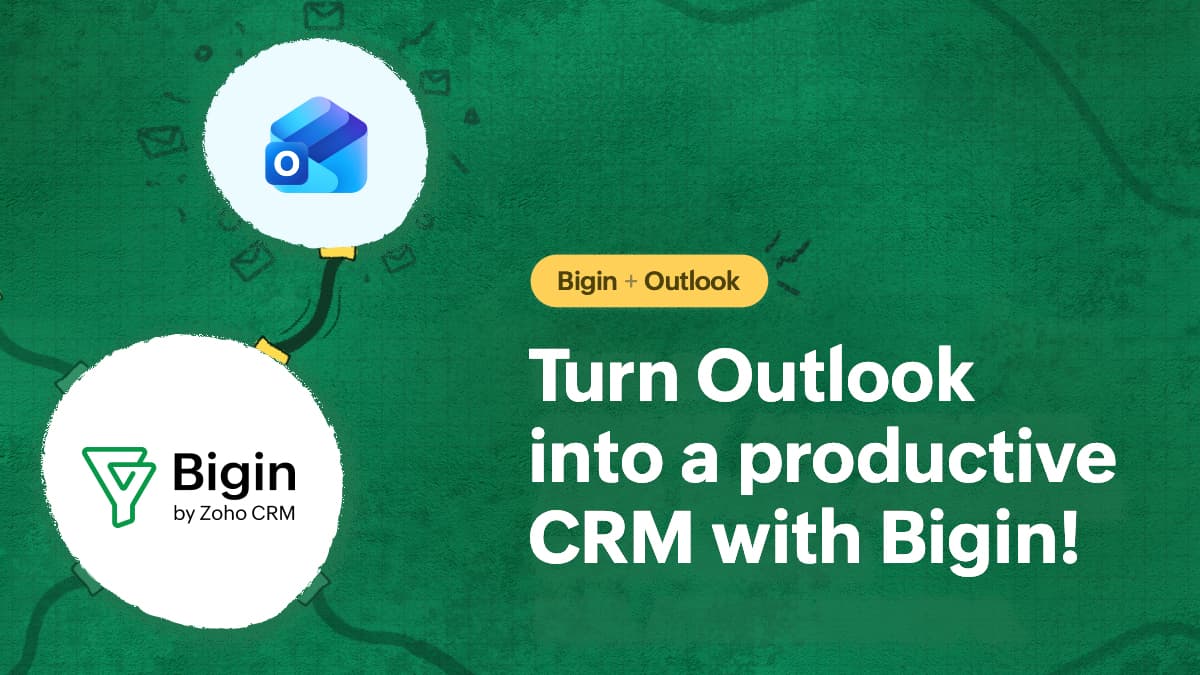- HOME
- Entrepreneurship
- How to build an effective cyber security plan for your small business
How to build an effective cyber security plan for your small business
- Published : July 22, 2025
- Last Updated : July 28, 2025
- 171 Views
- 8 Min Read

Have you ever wondered why small businesses are increasingly targeted by cyber criminals? You see, attackers actively look for weak security measures, under-resourced IT teams, and valuable customer data. Moreover, a comprehensive small business cyber security plan not only safeguards sensitive information but also nurtures trust with clients and partners. This ensures your business remains resilient and competitive.
Remember, crafting and maintaining a cyber security plan for small business operations is a non-negotiable part of responsible business management. In this guide, you’ll find a practical, actionable framework for developing a robust cyber security plan—complete with a downloadable template and real-world examples tailored for B2B SaaS environments.
Why your small business needs a cyber security plan
Cyber threats aren’t just a big business problem. In fact, small businesses often assume they’re too small to attract attention—but statistics tell a different story. Did you know an estimated 43% of cyber attacks are aimed at small businesses (Qualysec), while only a fraction have a plan in place to respond and recover? This means a single data breach or ransomware incident can quickly cause significant financial losses, disrupt operations, and irreparably damage customer relationships.
Moreover, implementing a cyber security plan for small business environments allows owners and managers to identify weaknesses, assign responsibilities, and respond rapidly to incidents. A well-documented plan also demonstrates compliance with industry regulations, provides peace of mind to customers, and positions your company as a professional, trustworthy partner in your respective sector.
Step-by-step guide to building your small business cyber security plan
1. Assess your current cyber security risks
Let’s start at the beginning. Building an effective small business cyber security plan starts with understanding your risk landscape. Begin by cataloging all digital assets, which typically include SaaS platforms, customer databases, internal documents, payment systems, and every device connected to your network. Have you ever wondered how each asset could be targeted? Think about threats like phishing, ransomware, credential theft, or unauthorized access.
Moreover, a structured cyber risk assessment for small business environments helps prioritize mitigation strategies. Use a simple risk assessment table to clarify your focus:
| Asset | Threat | Likelihood | Impact | Mitigation |
|---|---|---|---|---|
| Customer database | Phishing attack | High | High | Two-factor auth |
| Email accounts | Credential theft | Medium | High | Strong passwords |
| SaaS dashboards | Unauthorized use | Medium | Medium | Access restrictions |
2. Define security policies and access controls
Here’s the thing: clear, enforceable security policies are the backbone of every small business cyber security plan. These policies guide employee behavior, set vendor expectations, and create a culture of security awareness. Make sure your policies cover the following areas:
Password management: Mandate the use of strong, unique passwords and require frequent updates for all accounts—especially those tied to critical SaaS platforms and customer data.
Multi-factor authentication (MFA): Require MFA for all key business applications, like email, cloud storage, and B2B SaaS tools. Remember, MFA dramatically reduces the risk of unauthorized access.
Data access controls: Limit access to sensitive information strictly on a need-to-know basis. Use role-based permissions to prevent unnecessary exposure of customer data or proprietary information.
Device usage: Set clear rules for the use of company and personal devices, especially for remote work. Require secure Wi-Fi connections, and don’t allow public, unsecured networks for business activities.
Having said that, document these policies in your small business cyber security plan template. Clear documentation ensures consistency and serves as a reference during onboarding and regular reviews.
3. Implement security tools and software
Let’s face it: technology is your ally in the fight against cyber threats. Many B2B SaaS providers offer robust security features, but it’s ultimately your responsibility to configure and maintain them effectively. Here’s what you need in your toolkit:
Firewalls and endpoint protection: Use reputable solutions to guard against malware, unauthorized access, and data exfiltration.
Automatic patch management: Enable automatic updates for operating systems, SaaS applications, and security software. This closes vulnerabilities as soon as patches are released.
Email filtering and anti-phishing: Deploy tools that filter suspicious emails, block dangerous links, and quarantine malicious attachments before they ever reach employees.
Secure backup solutions: Regularly back up critical business data to secure, off-site locations. Automated backups mean rapid recovery in the event of ransomware or accidental data loss.
Remember, when configuring your B2B SaaS security settings, review documentation from your providers and apply recommended best practices. Activate features such as session timeouts, audit logs, encryption, and access notifications.
4. Train employees on cyber security awareness
Here’s something you might not expect: employees are often the weakest link in any security chain. But with effective training, they can quickly become your strongest defense. Make cyber security awareness training a regular event for all staff; no matter their technical expertise or job function. Key training topics include:
Recognizing phishing attempts: Teach employees how to spot suspicious emails, messages, and links that could lead to credential theft or malware infections.
Understanding SaaS security risks: Explain the importance of secure login practices, proper data handling, and the dangers of sharing access credentials.
Reporting suspicious activity: Establish clear procedures for employees to report potential security incidents, such as unusual account behavior or suspected malware.
Moreover, make cyber security training for small business a recurring agenda item, and track participation so no one is left behind. Regular updates keep your team informed of new attack methods and reinforce a culture of security.
5. Create an incident response plan
Let’s be honest: no security program is complete without a plan for responding to cyber incidents. A well-prepared incident response plan enables quick action to contain threats, minimize damage, and resume normal business operations. Your plan should specify:
Detection and confirmation: How will you identify and validate a suspected security breach? List key indicators and monitoring tools.
Notification procedures: Clearly outline who must be notified—management, IT staff, affected customers, and possibly regulatory bodies—and when.
Containment steps: Describe what actions to take to isolate affected systems, block unauthorized access, and prevent the spread of malware or data loss.
Recovery process: Define how to restore data from backups, reinstall software, and verify system integrity before resuming operations.
Documentation and review: Record all incidents, responses, and lessons learned. Use this information to strengthen your small business cyber security plan over time.
Remember, a sample small business cyber security plan will always include a concise, actionable incident response checklist for reference during high-pressure situations.
6. Review, test, and update regularly
The ground reality is that cyber security is a moving target. Threats evolve rapidly, and new vulnerabilities emerge as your business adopts new SaaS platforms and technologies. That’s why you should schedule quarterly reviews of your cyber security plan. During these reviews:
Test your backup and recovery procedures to make sure data can be restored quickly and accurately.
Review access logs for signs of unauthorized activity or unusual login attempts.
Update policies and procedures as your business grows or as you bring on new SaaS tools, vendors, or employees.
Solicit feedback from staff and update your employee training program to address recent threats or observed weaknesses.
Moreover, continuous improvement ensures your small business cyber security plan remains effective and relevant.
Small business cyber security plan template
Developing a cyber security plan is more manageable with a clear structure. Here’s how: use the following outline to build or refine your plan, customizing it to the needs of your business and the specifics of your SaaS environment. Copy the small business cyber security plan template and paste it in a word doc to start building the plan:
1. Company information
Business name: [Enter business name]
Business address: [Enter business address]
Primary contacts:
Name: [Enter name] | Role: [Enter role] | Contact: [Enter contact info]
System owner: [Enter name and role of the person responsible for information systems]
2. Risk assessment summary
Key digital assets:
[List digital assets such as customer data, financial records, SaaS platforms, source code, etc.]
Identified threats:
[E.g., Phishing attacks, ransomware, insider threats, data breaches]
Likelihood and impact ratings:
[Use a scale such as Low/Medium/High or 1–5 to assess each threat]
Mitigation strategies:
[Describe strategies such as encryption, regular backups, and staff awareness programs]
3. Security policies
Password management:
[Policy on complexity, expiration, reuse, and storage]
Multi-factor authentication (MFA):
[Specify systems requiring MFA and how it's implemented]
Access control:
[Describe role-based access and user provisioning/deprovisioning procedures]
Acceptable use policy:
[Rules for employee use of company devices, internet, and data handling]
4. Security tools and configurations
Inventory of security solutions:
[List tools like antivirus software, firewalls, SaaS-specific security controls, etc.]
Configuration notes:
[E.g., firewall rules, endpoint policies, admin controls in SaaS platforms]
Update schedules:
[Describe update frequency and responsible personnel]
5. Employee training program
Training frequency:
[E.g., Quarterly, biannually, or annually]
Topics covered:
[Cyber hygiene, phishing awareness, secure data handling, etc.]
Attendance tracking:
[Method for recording participation and completion]
Responsible personnel:
[Who is in charge of training and education efforts]
6. Incident Response Plan
Detection:
[How threats or breaches are identified, monitoring tools used]
Escalation:
[When and how to notify leadership, IT, or external partners]
Containment:
[Steps to isolate and neutralize the threat]
Recovery:
[Restoration procedures for systems, data, and operations]
Post-incident analysis:
[How incidents are documented, reviewed, and used for improvement]
7. Maintenance and review
Scheduled review dates:
[E.g., Every 6 or 12 months]
Assigned reviewers:
[Who is responsible for conducting the review]
Log for updates and changes:
[Maintain a record of what was changed, when, and why]
Last updated: [Insert date]
Next review due: [Insert date]
Best practices for enhancing your cyber security plan
Want to go further? Strengthen your small business cyber security plan by incorporating these proven practices:
Collaborate with SaaS vendors: Understand the security features of your SaaS products and clarify shared responsibilities for data protection. Many vendors provide security documentation and customer support specifically for B2B environments.
Encrypt sensitive data: Use encryption for all data stored on devices (at rest) and data transmitted between systems (in transit), particularly when handling customer information or payment details.
Set up role-based access control: Limit permissions in all business applications so employees only access the data and tools necessary for their job.
Automate security updates and backups: Automate as many routine security tasks as possible—including software updates, security patches, and data backups—to reduce the risk of human error.
Monitor emerging threats: Regularly consult reputable sources for updates on new cyber security threats and vulnerabilities. Adjust your policies and controls as needed to address these risks.
Having said that, a commitment to these best practices keeps your business ahead of cyber criminals and demonstrates your professionalism to clients and partners.
Common mistakes small businesses make with cyber security
Even the most well-intentioned businesses can fall into common traps that undermine their cyber security plan. Watch out for these frequent mistakes:
Relying on default settings: Default configurations in SaaS products and security tools may not provide adequate protection. Always customize settings to match your business needs.
Neglecting employee training: Failing to educate staff about current threats and safe practices leaves your business vulnerable to social engineering, phishing, and insider threats.
Ignoring software updates: Delaying or skipping updates for operating systems, SaaS platforms, and security software exposes your business to known vulnerabilities.
Inconsistent data backups: Backing up data sporadically or to insecure locations can lead to irretrievable losses in the event of ransomware or accidental deletion.
Overlooking third-party risks: Vendors, contractors, and service providers with access to your systems or data may introduce vulnerabilities. Assess and manage these risks as part of your overall plan.
Remember, review your small business cyber security plan regularly to ensure these pitfalls are addressed and corrective actions are implemented.
Actionable next steps
Download the small business cyber security plan template provided above
Conduct a thorough cyber risk assessment with your team, focusing on key digital assets and potential threats
Document and implement clear security policies tailored to your operations and SaaS platforms
Schedule and deliver your first employee cyber security training session—ensuring all staff are aware of common risks and response procedures
Set up quarterly calendar reminders to review, test, and update your cyber security plan as your business evolves
Remember, developing and maintaining a cyber security plan for small business operations is the most effective way to safeguard your data, protect your reputation, and avoid costly disruptions. By taking these steps today, you ensure your business is ready to defend against threats and recover swiftly from incidents, no matter what challenges arise.
 Anubhav
AnubhavAnubhav is a product marketer with an insatiable thirst for all things content marketing, technology, and SaaS. His expertise lies in crafting compelling narratives that resonate with audiences and drive business growth. With a deep-rooted interest in entrepreneurship, Anubhav closely follows the latest industry trends and innovations, constantly seeking new ways to elevate marketing strategies.



